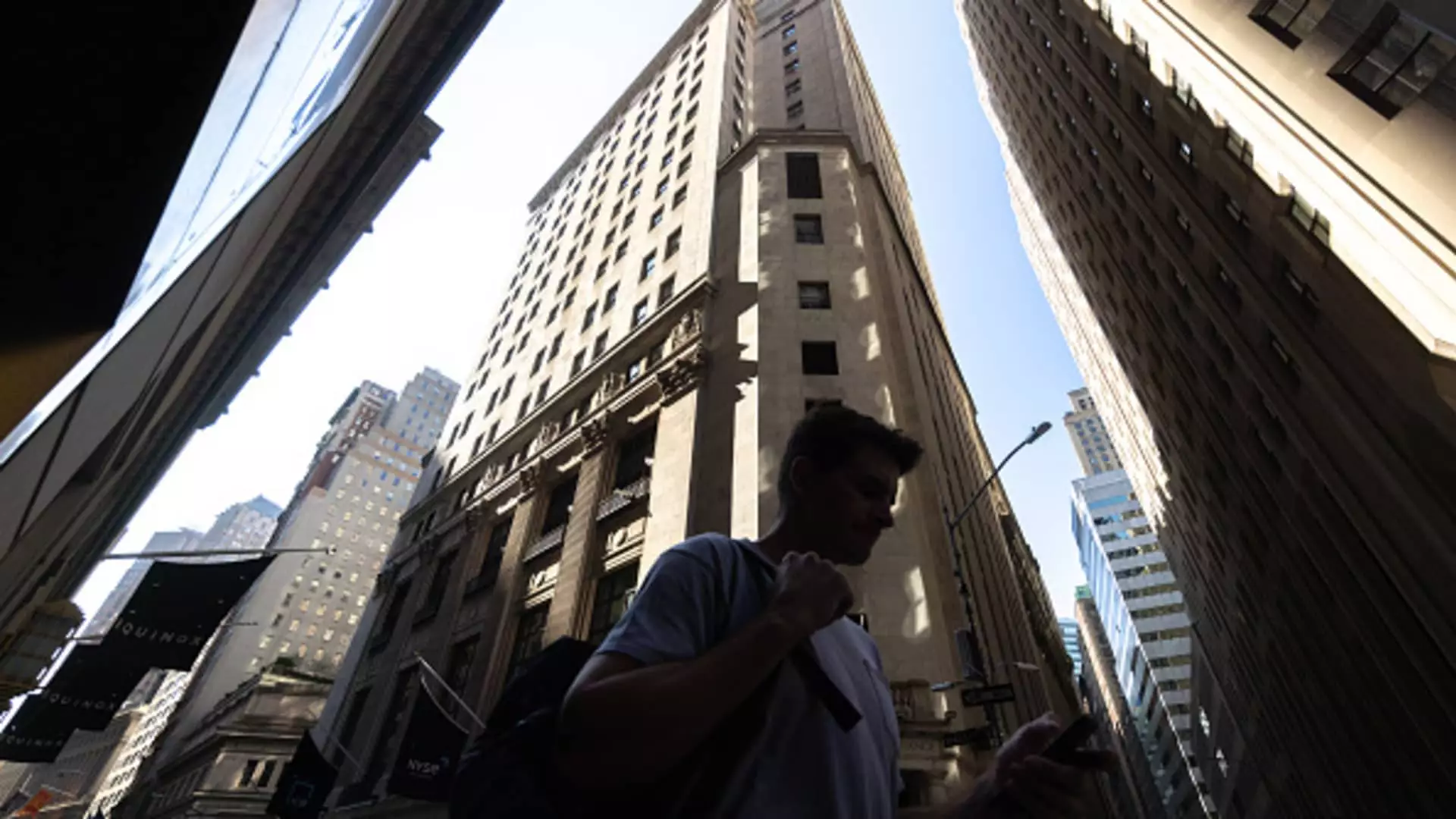The abrupt resurgence of market exuberance following a tumultuous global sell-off raises significant concerns among financial analysts. This response has been characterized as paradoxical, particularly by leading figures in asset allocation research. According to Christian Mueller-Glissmann, an expert from Goldman Sachs, the rapid recovery of investor sentiment should not be viewed through rose-colored glasses. Instead, it serves as a crucial warning signal amid an overall context of economic uncertainty.
In early August, global stock markets faced intense scrutiny. Investor fears regarding the potential for a U.S. recession and deleveraging in popular “carry trades” tied to the Japanese yen rippled through equity markets, leading to significant drops in stock values. For instance, on August 5, the S&P 500 suffered a staggering decline of 3%, marking its largest single-day loss since 2022. Observers were quick to label this downturn as significant, indicating a dangerous pivot point for market dynamics.
However, the narrative shifted quickly thereafter. The optimism stemming from anticipated interest rate cuts by the Federal Reserve and signs of strengthening U.S. economic indicators catalyzed a rapid upswing in stock prices. Just weeks later, the S&P 500 had rebounded by 8%, while the Dow Jones Industrial Average gained over 6%. This swift recovery raises questions about the robustness of market foundations. If bullish sentiment had become overly inflated before the decline, could this swift rebound merely represent a market overreaction, a classic case of bouncing back from the brink?
Christian Mueller-Glissmann articulates the prevailing concern succinctly—while markets may have returned to their former levels, underlying sentiment and risk appetite have not. The rebound masks critical vulnerabilities that bear examination. He points out that the positioning heading into the downturn indicated strong bullish sentiment. However, this bullishness is not inherently accompanied by strong macroeconomic performances. Leading up to the early August decline, the U.S. experienced a series of disappointing macro surprises, suggesting that investors might have been operating with an outdated assumption of stability.
Mueller-Glissmann emphasizes a paradox: while stock prices have largely recovered, the anxiety encapsulated by safe assets—such as bonds, gold, and various currencies—remains present. Investors continue to seek refuge in traditionally “safe” investments, which underscores a lingering apprehension about the sustainability of the current market. The reluctance to abandon safe havens could indicate a deeper unease within the financial landscape, hinting at a lack of faith in the robustness of the rebound.
The financial world is now closely monitoring the forthcoming U.S. inflation report, which promises to provide insights into the economic stability of the world’s largest economy. This report, focusing on personal consumption expenditures, is critical in contextualizing the Federal Reserve’s potential policy changes. Last week, Fed Chair Jerome Powell hinted that “the time has come for policy to adjust,” intensifying speculation surrounding an imminent interest rate cut.
In light of these circumstances, Mueller-Glissmann presents a pivotal perspective: the August market decline represented a significant overreaction and, consequently, an ideal buying opportunity for investors who dared to recognize the potential for quick recovery. This assertion underscores the importance of strategy and risk assessment, as market conditions can change swiftly and unpredictably.
Mueller-Glissmann advises caution in portfolio management amidst this current climate. He advocates for an adaptable approach to risk allocation, especially following the recent surge in stock prices. Investors who embraced a balanced 60/40 portfolio strategy experienced comparatively minor disruptions during the turbulent last month, due in large part to the stabilizing influence of bonds. However, he warns that this level of safety may diminish, suggesting a reconsideration of risk appetites as the market undergoes further adjustments.
The critical takeaway from this analysis of the present market landscape is that the apparent return to bullish sentiment may not tell the full story. While stock indexes are on the rise, individuals and institutions must maintain diligent scrutiny over underlying economic indicators and market dynamics to navigate impending challenges effectively. Risk management and strategic planning are paramount as investors look to ensure a resilient portfolio in uncertain times.
While the recent rebound in stock prices may encourage optimism, it is essential for investors to remain vigilant. The underlying economic indicators paint a more nuanced picture that calls for careful consideration in investment strategies. By acknowledging potential pitfalls and adapting to changing market conditions, investors can better navigate the complex interplay of risk and reward in the current financial climate.


Leave a Reply